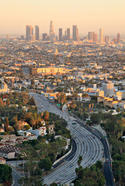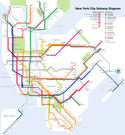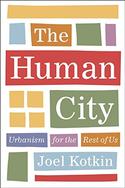So much for peak VMT. The planners and analysts who watched vehicle miles traveled (VMT) trends seemingly peak are no doubt anxious as the preliminary 2015 VMT numbers produced by the U.S. Department of Transportation showed new record total VMT well ahead of the 2007 number that many had hoped signaled peak U.S. VMT. Perhaps even more disconcerting was the sharp increase in per capita VMT, up approximately 2.6 percent for 2015. read more »
Urban Issues
Murbanism (Mormon Urbanism)
I coined the portmanteau murbanism some years ago on a trip to Salt Lake. Mormon urbanism is shorthand for a theory I have about adaptation and resilience. The term connotes a place that has all the qualities that should result in long term failure, but will probably thrive because of the local culture. Murbanism doesn’t necessarily have to involve a single Mormon. Let me explain… read more »
- Login to post comments
The Best Small And Medium-Size Cities For Jobs 2016
When we look at how the U.S. economy is performing, we usually focus on the largest metropolitan areas. But some 29% of non-farm jobs in the U.S. are in small and midsize metro areas. And since they tend to be less economically diverse and more volatile, these metro areas often are where we can more clearly see the fissures in the economy — the sectors that are growing, and which are shrinking. read more »
- Login to post comments
New York's Incredible Subway
The New York subway is unlike any other transit system in the United States. This system extends for 230 miles (375 kilometers) with approximately 420 stations. It serves the four highly dense boroughs of the city (Manhattan, Brooklyn, Queens and the Bronx), each of which is 20 percent or more denser than any municipality large municipality in the United States or Canada. read more »
Developing Economies Dominate Per Capita GDP-PPP Growth
The world’s developing economies have dominated purchasing power economic growth over the last 35 years, according to the most recent gross domestic product (GDP-PPP) per capita data from the International Monetary Fund (IMF). This article summarizes economic growth for three periods, including from the earliest IMF data (1980 to 2015), the intermediate 2000 to 2015 period and the more recent 2010 to 2015 timeframe. read more »
- Login to post comments
California’s High-Speed Rail Authority Wins Dishonor of the California Golden Fleece Award
The California High-Speed Rail Authority (CHSRA) has won the Independent Institute’s first California Golden Fleece Award for its lack of transparency and history of misleading the public about key details of the state’s “bullet-train” project, which no longer reflect what voters approved in 2008. read more »
- Login to post comments
The Best Cities For Jobs 2016
While speculation is mounting that they’re overheating, the tech boom is still creating jobs at a rapid pace in the Bay Area and Silicon Valley, placing them atop our annual assessment of The Best Cities For Jobs for the third year in a row. A number of secondary tech centers are posting strong growth as well on the back of the boom, as well as spillover from Northern California as high prices push expanding companies and startups to locate elsewhere. read more »
- Login to post comments
Manhattan Ultra-Luxury ‘Battling the Serpent of Chaos’
The deceleration of China and resulting commodities crash have created a problem for developers of ultra luxury condominiums.
The ancient Egyptians believed that the sky was a solid dome, the belly of the goddess Nut who arched her body from one side of the horizon to the other. Every day, the sun god Ra emerged in the east and sailed in his boat across the sky until dusk when he disappeared in the west by dipping below the surface of Nun, the ocean upon which the whole flat earth floated. read more »
- Login to post comments
How to Make Cities Livable Again
In his new book, The Human City, Joel Kotkin looks at the ways cities succeed or fail in terms of how their residents are best served. Here’s a tour of some past models.
Throughout history, urban areas have taken on many functions, which have often changed over time. Today, this trend continues as technology, globalization, and information technology both undermine and transform the nature of urban life. Developing a new urban paradigm requires, first and foremost, integrating the traditional roles of cities—religious, political, economic—with the new realities and possibilities of the age. Most importantly, we need to see how we can preserve the best, and most critical, aspects of urbanism. Cities should not be made to serve some ideological or aesthetic principle, but they should make life better for the vast majority of citizens. read more »
- Login to post comments
Politics Move Left, Americans Move Right
In an election year in which the top likely candidates come from New York, big cities arguably dominate American politics more than at any time since New Deal. The dynamics of urban politics, which are characterized by high levels of inequality and racial tensions—may be pushing Democrats ever further to the left and Republicans toward the inchoate resentment of Donald Trump.
read more »





















